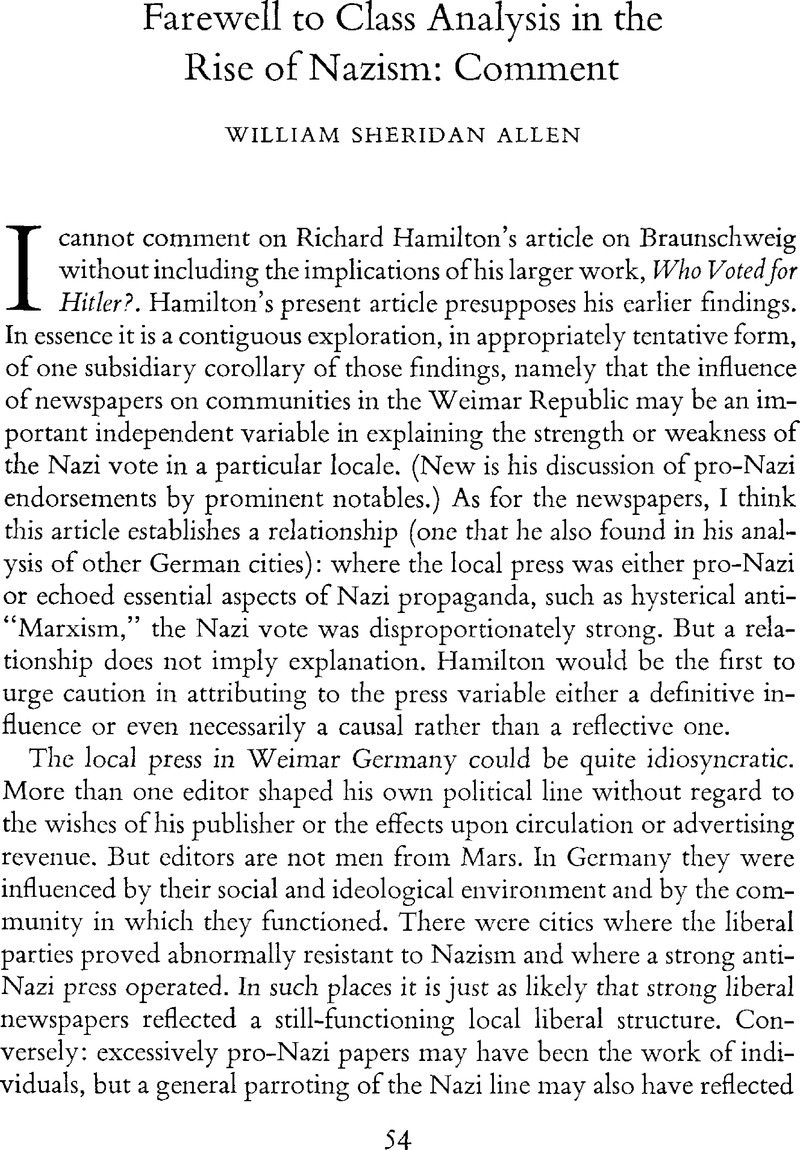Article contents
Farewell to Class Analysis in the Rise of Nazism: Comment
Published online by Cambridge University Press: 16 December 2008
Abstract

- Type
- Symposium: Who Voted for Hitler?
- Information
- Copyright
- Copyright © Conference Group for Central European History of the American Historical Association 1984
References
1. The GIGO caveat lies at the heart of the several problems listed as most “trouble-some” for quantitative historians by Konrad Jarausch in “Quantitative History in Transition,” AHA Perspectives 20, no. 6 (Sept. 1982): 14–21.
2. The Infancy of Nazism: The Memoirs of Ex-Gauleiter Albert Krebs, 1923–1933, ed. and trans, by Allen, William Sheridan (New York, 1976), 44.Google Scholar See also 77, 81, for Krebs's remarks on the general absence of “real” workers in the Nazi movement in Hamburg.
3. Childers, Thomas, The Nazi Voter: The Social Foundations of Fascism in Germany, 1919–1933 (Chapel Hill, 1984), 6–14Google Scholar for the methodology, 262–69 for the conclusions involving the numerous exceptions and qualifying factors.
4. A new descriptive term for this, “community of solidarity,” has been coined by Lösche, Peter and Scholing, Michael, “Solidargemeinschaft im Widerstand: Eine Fallstudie über ‘Blick in die Zeit’,” Internationale wissenschaftliche Korrespondenz zur Geschichte der deutschen Arbeiterbewegung 19 (1983): 517–61.Google Scholar Less restrictive is the concept “subculture” as coined in Roth, Guenther, The Social Democrats in Imperial Germany (Totowa, N.J., 1963), 8–10.Google Scholar For a broad typology see Allen, William S., “The Appeal of Fascism and the Problem of National Disintegration,” in Turner, Henry A., ed., Reappraisals of Fascism (New York, 1975), 44–68.Google Scholar
5. Best summarized in Jones, Larry E., “‘The Dying Middle’: Weimar Germany and the Fragmentation of Bourgeois Politics,” Central European History, 5, no. 1 (03 1972): 23–54.CrossRefGoogle Scholar
6. Childers now concludes that much of the Nazi vote came from this. See The Nazi Voter, 268.
- 2
- Cited by




